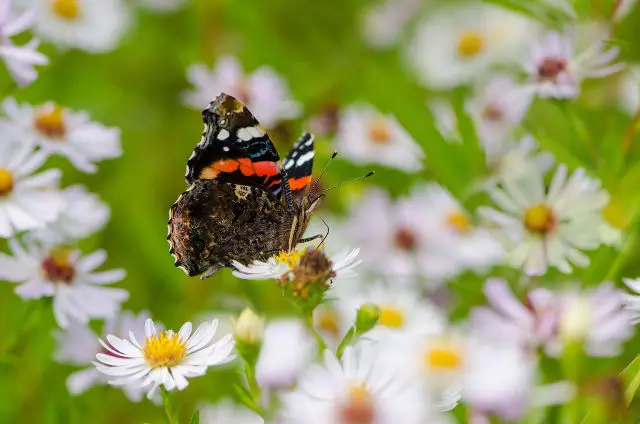Katie shares this latest news from Butterfly Conservation. Ed
Gardeners are being asked to look out for butterflies this autumn after species struggled during the cold and wet summer holiday season.
Butterfly numbers fell during August, but the warm conditions in spring enabled many species to emerge and breed early this year.
These good spring and early summer conditions enabled more butterflies to fit in an extra generation, so we may be poised for an impressive autumnal emergence of species such as Comma, Red Admiral and Speckled Wood in the coming weeks.
A timely boost
Despite their association with summer, Peacock, Small Tortoiseshell, Large White, Small White, Painted Lady, Small Copper, Common Blue and other butterfly species can be seen into early November if mild conditions persist.
A warm spell of weather this month could provide a timely boost to garden sightings as butterflies fly in to take advantage of the abundant blooms in garden borders while most flowers in the countryside have gone over.
Keep on spotting
Wildlife charity, Butterfly Conservation, wants gardeners to keep butterfly spotting over the autumn and early winter by taking part in the Garden Butterfly Survey, sponsored by B&Q, to help find out just how late in the year butterflies can still be regularly seen.
Butterflies are important indicators of the health of the environment. By helping them, gardeners can help create a better home for wildlife, especially beneficial insects such as bees that play a vital role in pollinating wildflowers and many crops.
The UK’s estimated 24 million gardens represent an area roughly the size of Somerset and, at a time when butterflies are in severe decline, offer a potentially huge and vitally important habitat.
Gardens still offering nectar
Butterfly Conservation Head of Recording Richard Fox said:
“Gardens become increasingly important for butterflies at this time of year.
“Nectar, the flight fuel for most of our butterflies, is in short supply in the countryside as we move into autumn, yet many of our garden flowerbeds and borders are still full of colour.
“For some butterflies it is a matter of life and death; species such as the Small Tortoiseshell, Peacock and Comma, which hibernate as adult butterflies, have to feed up and lay down substantial fat reserves in their bodies in order to survive the winter. If they can’t find enough nectar they simply won’t make it through to breed next spring.
“Others, such as the Painted Lady and Red Admiral will be taking on fuel reserves that they need to migrate south to warmer climes around the Mediterranean.”
Garden Butterfly Survey
The aim of the Garden Butterfly Survey is to assess the changing fortunes of butterflies in gardens and, ultimately, to understand how important gardens are for our butterfly populations and what gardeners can do to help.
Rachel Bradley, B&Q’s Sustainability Manager, said:
“We’ve done a lot of work at B&Q this year to find out more about nature in gardens and have talked to over 2,000 people about their views. We know that most people want to support wildlife and feel that they benefit themselves from doing so.
“Our Nature of Gardens report gives ten top tips to get started, the first being to ‘Look out for wildlife and share your discoveries’. Butterfly Conservation’s Garden Butterfly Survey is a great activity that can help to engage people with nature.”
Take part
Butterfly sightings can be entered online to help build a picture of the fortunes of these beautiful insects.
Image: © Tim Melling, Butterfly Conservation





